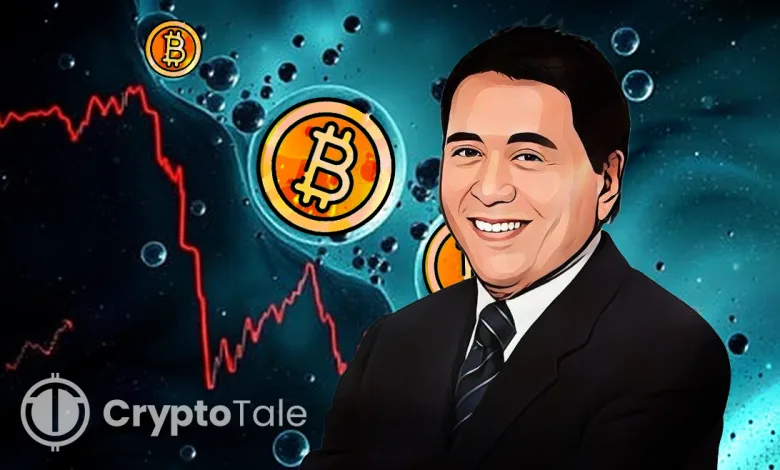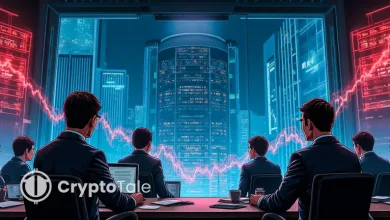“Crash Coming?” Kiyosaki Predicts Bubble Burst, But Plans to Buy the Dip

- Robert Kiyosaki signals a buying opportunity if Bitcoin, gold, and silver bubbles burst.
- Bitcoin inflows surge as whales and miners cash in, hinting at a short-term correction.
- Market cycle experts say the peak is not yet in—corrections may open strategic entries.
Renowned author and investor Robert Kiyosaki has issued a warning about potential bubbles forming across key asset classes. According to Kiyosaki, gold, silver, and Bitcoin may all be poised for a significant correction. The “Rich Dad Poor Dad” author stated that the bursting of these bubbles is imminent, and when it happens, he plans to buy. While his remarks may sound alarming, they align more closely with a long-term strategy than a fear-driven prediction.
This recent caution comes after Kiyosaki celebrated Bitcoin’s all-time high above $120,000, calling it bad news for those who missed out. He has since clarified that, despite buying more Bitcoin during the rally, he will not increase his holdings further until market direction becomes clearer. His apparent shift from bullishness to bearishness is drawing attention due to its timing and implications for broader financial markets.
Contradictory Views and Market Context
Kiyosaki’s message about a looming crash stands in contrast to his earlier criticisms of those warning of a Bitcoin collapse. In early July, he dismissed crash warnings as fearmongering from “clickbait losers.” Despite his fluctuating tone, his position seems rooted in a view of cyclicality and long-term accumulation, not panic selling.
Market analysts have pointed out that Kiyosaki has made several inaccurate crash predictions in recent years. Despite this, his warnings often mirror movements in major indices like the S&P 500. His statements may also be influenced by macroeconomic pressures, such as Federal Reserve uncertainty, and tightening liquidity conditions globally.
Some experts believe Kiyosaki is reacting to perceived overleveraging in both traditional and crypto markets. With ETFs holding significant amounts of Bitcoin and AI-driven equities trading at elevated valuations, concerns over a correction are not unfounded. Historical patterns suggest that such dips can present buying opportunities for long-term investors.
Crypto Market Volatility and Institutional Behavior
Following Bitcoin’s recent price peak around $123,000, there has been a noticeable uptick in exchange inflows. On July 15, inflows rose to 81,000 BTC, the highest since February. A large portion of this movement was driven by whales and miners, with miner outflows reaching 16,000 BTC.
According to CryptoQuant’s data, the balances of miner wallets have decreased by 3,000 BTC (68,000 – 65,000) since June 26. This movement shows that most miners have taken advantage of the recent price hike in order to make profits. This kind of activity can have implications of immediate market pressure and further worries of overheating that can be built by Kiyosaki.
Nevertheless, Bitcoin is a cyclical asset demonstrating continuous peaks and troughs every four years. On the assumption that the present economic cycle persists, the cycle may peak in 2025. The analysts predict that even after this cycle, the price of Bitcoin can still rise to the range of $130,000 to $200,000.
Strategizing in the Face of Economic Insecurity
Kiyosaki has presented his latest warning, which seems more like a positioning game for him rather than a call to panic. His plan is similar to what he had earlier advised people to invest small amounts of money in Bitcoin to find wealth in the long term.
He also reiterated that overinvesting can be dangerous, echoing his past phrase: “Pigs get fat, hogs get slaughtered.” His decision to pause further Bitcoin purchases reflects caution amid macroeconomic uncertainty and potential market overextension.
Industry experts argue that treasuries holding Bitcoin do not represent speculative behavior but a strategic shift into what they see as a superior form of money. Joe Burnett, director of Bitcoin strategy, emphasized that treasury investors are allocating to Bitcoin directly, not speculative assets.
Related: Robert Kiyosaki Buys Bitcoin, Prefers Risk Over Regret
Cycles, Corrections, and Institutional Outlooks
Bitcoin has consistently been labeled a bubble throughout its existence, yet it has rebounded through multiple market cycles. The ongoing debate centers on whether this is a moment of fear or part of a healthy consolidation in a strong-cycle market.
Apollo Capital’s Henrik Andersson advises investors to base decisions on research rather than influencer predictions. While retail investors may be sensitive to Kiyosaki’s warnings, institutions could view a dip as a repositioning opportunity.
The CoinGlass bull market signal dashboard indicates that the top may not be near, with none of its 30 indicators flashing red. This implies that, although the uptrend might be interrupted slightly by short-term corrections, the overall trend is evident.
The caution given by Kiyosaki must be taken as a component of a greater plan instead of a straightforward prediction of failure. How true that will turn out to be, we will soon see, but his point is clear: reposition, not panic, might be a moment of a reset.





